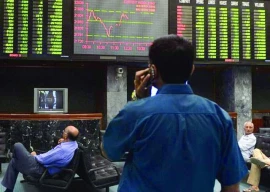
According to industry experts, the 100cc and above bike segment witnessed a record growth, while the growth in sales of bikes having 70cc engines posted decline. The changing consumer choices have forced the local motorcycle assemblers to begin focusing on production of bikes with engines of 100cc and above.

Last year, over 1.5 million motorcycles were produced in the country, of which production of 70cc bikes were the bulk. However, analysis of segment-wise data shows that production of bikes having engines of 100cc and 125cc and above grew 34% and 20%, respectively, while production of the previously most-popular 70cc bikes shrunk 10%. Bikes having engines of 70cc still make up 80% of the total market share.
Changes in consumer preference patterns is not new to the automotive industry as India is an example where the demand for bikes with engines of 100cc and above jumped from 48% in 2005 to 65% in 2012.
“The real change in the industry has come with the transformation of Pakistan, and the phenomenal jump (in motorcycle production) from 100,000 motorcycle in 2000-01 to two million a year presently is a testimony to this transformation,” said Atlas Honda Research and Development General Manager Afaq Ahmad, while talking to journalists.
When per capita income touches the $3,000-barrier, the Pakistani auto market will experience a change in consumer behaviour where the customer will opt for both luxury motorcycles and trendy bikes like scooters and so on, Ahmad added.
Per capita income is a very important factor in the development of the automotive industry of any country as it results in healthier competition when the economic situation is unfavourable, Ahmad said. According to data from the Pakistan Bureau of Statistics, the country’s per capita income clocked in at $1,290 in 2012 – much lower compared to other developing nations.
High economic growth rate raises the standard of living of the population, which in turn creates more demand for higher-end automobiles.
Eventually, the rising standard of living when per capita income touches $3,000-$4,000 mark will drive consumers to shift from motorcycles to cars. At that stage, the motorcycle industry will also shift focus from being a necessity market to somewhat luxury or sports-oriented market, Ahmad said.
This transformation will start bringing in bigger-engine bikes into the Pakistani market, which will be a good sign not only for the automobile industry but for the economy as a whole, he added.
The advantage of 100% localisation, which the Pakistani motorcycle assemblers enjoy, has not only helped the prices stablilise and become competitive with the region, but it has also allowed local assemblers to gain a foothold in foreign markets such as Bangladesh and Sri Lanka. The local industry is also seeking to introduce locally-made bikes to South African and Iranian markets, Ahmad said.
“Honda Japan has recently declared Pakistan as the hub for 70cc technology in the region.”
In Pakistan, first-ever locally-assembled motorcycles were seen in 1964 with the inauguration of a motorcycle factory by Honda in Karachi. The industry saw a revolution in the 1990s when local brand names surfaced. Presently, there are 100 assemblers in the country, out of which 81 are active.
Published in The Express Tribune, October 9th, 2013.
Like Business on Facebook, follow @TribuneBiz on Twitter to stay informed and join in the conversation.























COMMENTS
Comments are moderated and generally will be posted if they are on-topic and not abusive.
For more information, please see our Comments FAQ